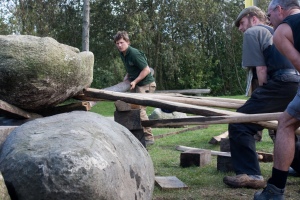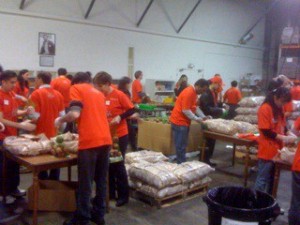“When you believe in things you don’t understand, then you suffer.”
– Superstition, by Stevie Wonder
We’re seeing rapidly increasing adoption of social business technologies by more and more companies. Not just Social CRM, which has been out for a while, but now the internal adoption of these technologies as well, to help with collaboration, information sharing, innovation, and so on.
The temptation is to rush in so that you don’t fall behind your competition that is already using these technologies. But before you do that, take some time to think about what you’re really trying to achieve.
Field of Dreams?
A too-common approach for internal social business roll-out is “Build it and they will come.” That is, no real specific purpose is outlined, other than, “These tools will help you collaborate, so go forth and collaborate!” The company then hopes that employees will join in, productivity will increase, innovations will grow, etc. The trouble with this is that it will very likely result in disappointment, both for the company as well as the employees.
Why? It’s because this is the “Social Cargo Cult” approach.* Companies hear about their competition using social technologies internally, they see their competition doing well or better than they are, they hear success stories around social business, and they conclude, “We must use social as well!” But they don’t understand why.
So what to do to avoid this problem? First, come up with a specific purpose or objective you think can be achieved through the usage of social technologies within your company. This purpose becomes your testable hypothesis upon which you will build a better understanding going forward of what social technologies can do to help your business and how to best use them. You need to determine if you are getting a positive result from using social technologies (i.e. “moving the needle.”)
For example, you could target faster project completion times as the benefit. You may only be able to estimate what the improvement in completion times were, but it can be done and it will give you at least some understanding of whether there was a benefit and how much. You might target an improvement in product quality, problem turnaround time, design revisions, etc. The point is identify something where a result can be measured and compared with some degree of confidence.
Now that you have a targeted measure you’ve identified, you’ll want to communicate that to everyone involved as well. Why? Because you want the people you are trying to get to participate to understand the expected benefit. If they don’t respond or they drop out, then you can take that fact as a hint that either the benefit doesn’t motivate them to participate or that the technologies are not delivering on the anticipated benefit. Either way, you are getting information that you can operate on, so rethink what the benefit is, your use of the technology, or both.
Is this Heaven?
To sum up, defining the purpose that drives your use of social technologies both provides you with a measure of whether it’s working as well as a reason for people to participate. And if either of these things aren’t happening, you can try something different and test it out. Without it, you are left with just hoping that good things will happen, as if by magic.
* “Cargo Cult” refers to a social science phenomenon where isolated cultures have been exposed suddenly to advanced technologies that provide some kind of benefit to them (usually as a side-effect.) The culture cannot grasp all the complexities involved and they end up doing what most humans do – they conclude that the attributes they observe are the key factors that drive resulting benefits. They then attempt to recreate those observable attributes themselves to obtain the same benefits, but to no avail; they did not fulfill all the right requirements sufficiently to get the desired results.











 This weekend marks the anniversary of the birth of a nation whose motto is about unity of purpose while acknowledging the differences in those who contribute to that purpose. That’s a very interesting duality that
This weekend marks the anniversary of the birth of a nation whose motto is about unity of purpose while acknowledging the differences in those who contribute to that purpose. That’s a very interesting duality that 
 There have been a series of excellent posts, particularly
There have been a series of excellent posts, particularly